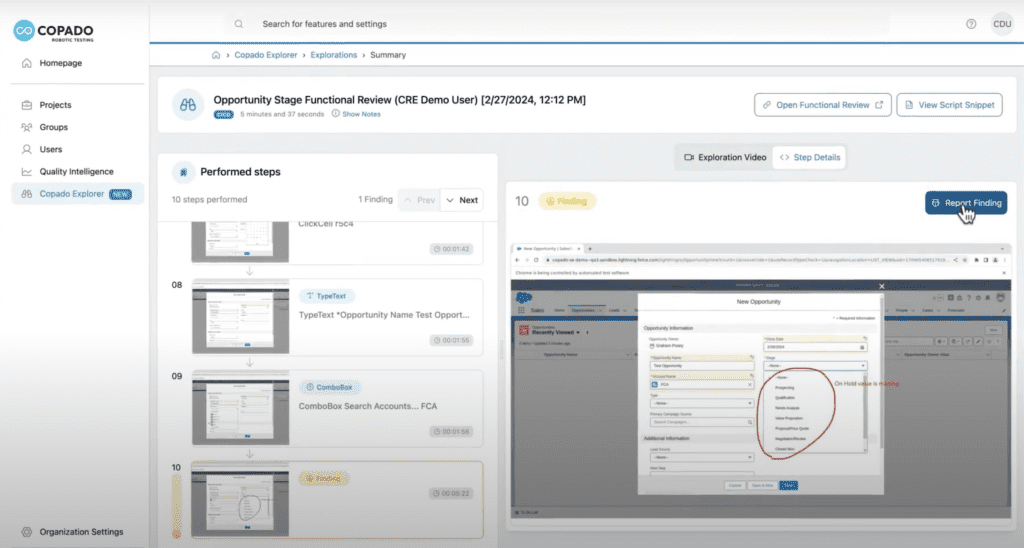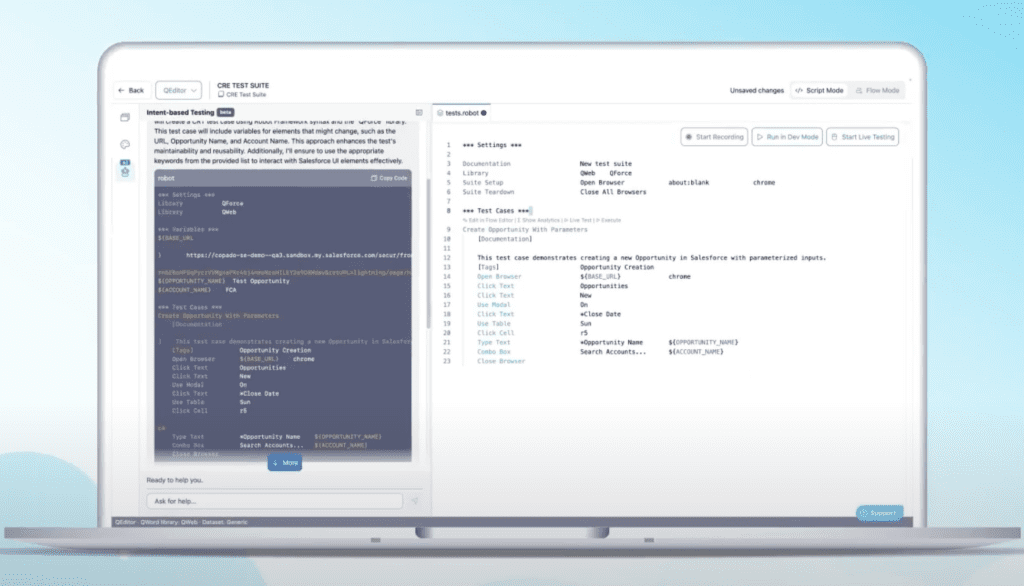Copado Unveils Explorer
Copado, the leading Salesforce devops solution provider, has introduced a novel product called Copado Explorer. “Copado Explorer makes it easy to automate the manual testing process, drastically reducing the time and effort typically required in traditional testing methods and improving both release velocity and quality. This launch not only underscores Copado’s commitment to innovation, but also sets a new benchmark in facilitating streamlined, effective, and collaborative software testing,” said Esko Hannula, Senior Vice President of Product Management at Copado.
The Prevalence of Manual Testing
In a recent interview, David Brooks, SVP of Evangelism at Copado, shared insights gleaned from conversations with 60 Salesforce customers. “We discovered manual testing was prevalent,” Brooks explained. “Almost all of the Salesforce users out there in centers of excellence are doing manual testing. They’re doing it because they typically don’t have the automation resources that other teams have.”
Brooks further elaborated on the challenges faced by Salesforce teams: “Business users don’t have a lot of time to give us, so we need to maximize the amount of testing they can get out of it. They want to do regression testing, but they must do the manual testing and then run out of time. They never have the chance to actually create automated tests.”
Simplifying the Testing Experience
Copado Explorer addresses these challenges by providing a user-friendly experience tailored specifically for business users conducting User Acceptance Testing (UAT). “Explorer basically simplifies the user experience so that if somebody assigned you a feature to test, there’s a big button that says, ‘Log In,’ and it’s got the credentials set up for you,” Brooks explained. “You just click on the button, and now you’re in the testing environment.”

With Explorer, testers can easily log bugs by annotating screenshots, which are automatically packaged with reproduction steps and sent directly to developers’ bug tracking systems. “The developer doesn’t have to ask you how to reproduce the bug,” Brooks noted. “They basically have something that can reproduce it for them in the environment and fix it.”
Leveraging Generative AI for Rapid Automation
One of Explorer’s standout features is its ability to generate automation scripts from manual tests using generative AI. “You take that script, give it to a test engineer, and say, ‘Turn this into a parameterized test,” Brooks explained. “30 seconds later, they’ve got that test parameterized and put it into something that they can put into a test suite.”

This seamless transition from manual to automated testing lowers the barriers to entry for teams looking to adopt test automation practices. “We’ve effectively minimized the time spent on manual testing, made it possible to reproduce issues easier for developers, and made it super simple to turn that into an automated test,” Brooks emphasized.
Meeting Customers Where They Are
While Copado’s existing robotic testing tool is designed for automation engineers, Explorer will be packaged and priced separately to cater to the needs of manual testers. This reflects Copado’s commitment to meeting customers where they are in terms of testing maturity. “Don’t ask them to change their behaviors,” Brooks advised. “They’re doing manual testing today. Help them do their manual tests much better and more efficiently, and automatically generate the scripts for them so that they can start moving to that next level of maturity.”
The Importance of Shifting Testing Left
As generative AI enables faster Salesforce delivery, Brooks cautions that testing must keep pace to avoid potential pitfalls. “If you go faster, more efficiently, but you don’t put any testing in place, then you’re going to deliver more bugs to production faster,” he warned. “You got to go to the planning phase. If you don’t get the user story right with acceptance criteria and business impact, then you’re going to build the wrong thing.”
Copado Explorer facilitates a shift-left approach, helping teams catch and resolve issues earlier in the development cycle. “What people are beginning to understand is that generative AI is going to help us go a lot faster,” Brooks observed. “And then they start to see, ‘Oh, but what happens if we deliver bugs faster?’ They all recognize they need to test.”
A Game-Changer for the Salesforce Ecosystem
With only an estimated 20% of Salesforce customers currently practicing test automation, Copado sees a significant growth opportunity. “The testing side is probably closer to 20% [adoption], so we see that there’s an early mover opportunity on the Salesforce side,” Brooks stated.
By providing a low-code solution that bridges the gap between manual and automated testing, Copado aims to make test automation more accessible to Salesforce teams at various stages of their Salesforce devops journey. “The thing to do is don’t ask them to change their behaviors. Make manual testing better, more efficient, and automatically generate the scripts for them,” Brooks reiterated.
As the demand for faster delivery rises, the need for efficient and effective testing becomes increasingly critical. Copado Explorer represents a significant step forward in enabling Salesforce teams to meet these challenges head-on. By empowering manual testers, streamlining collaboration, and facilitating the transition to automation, Explorer has the potential to improve the way Salesforce teams approach testing.






